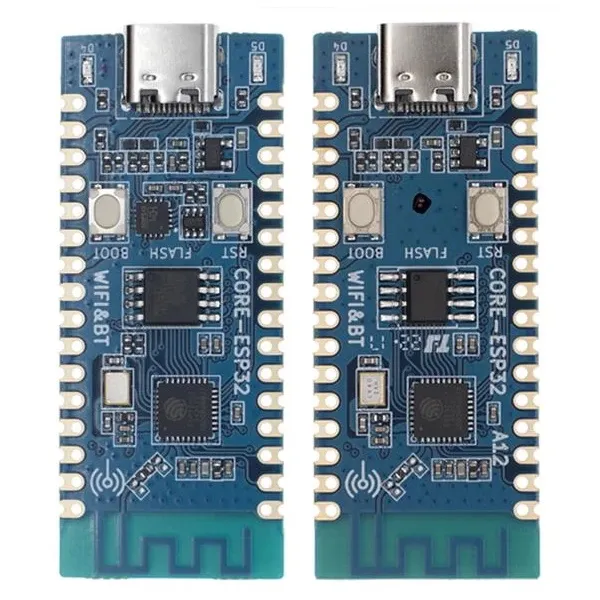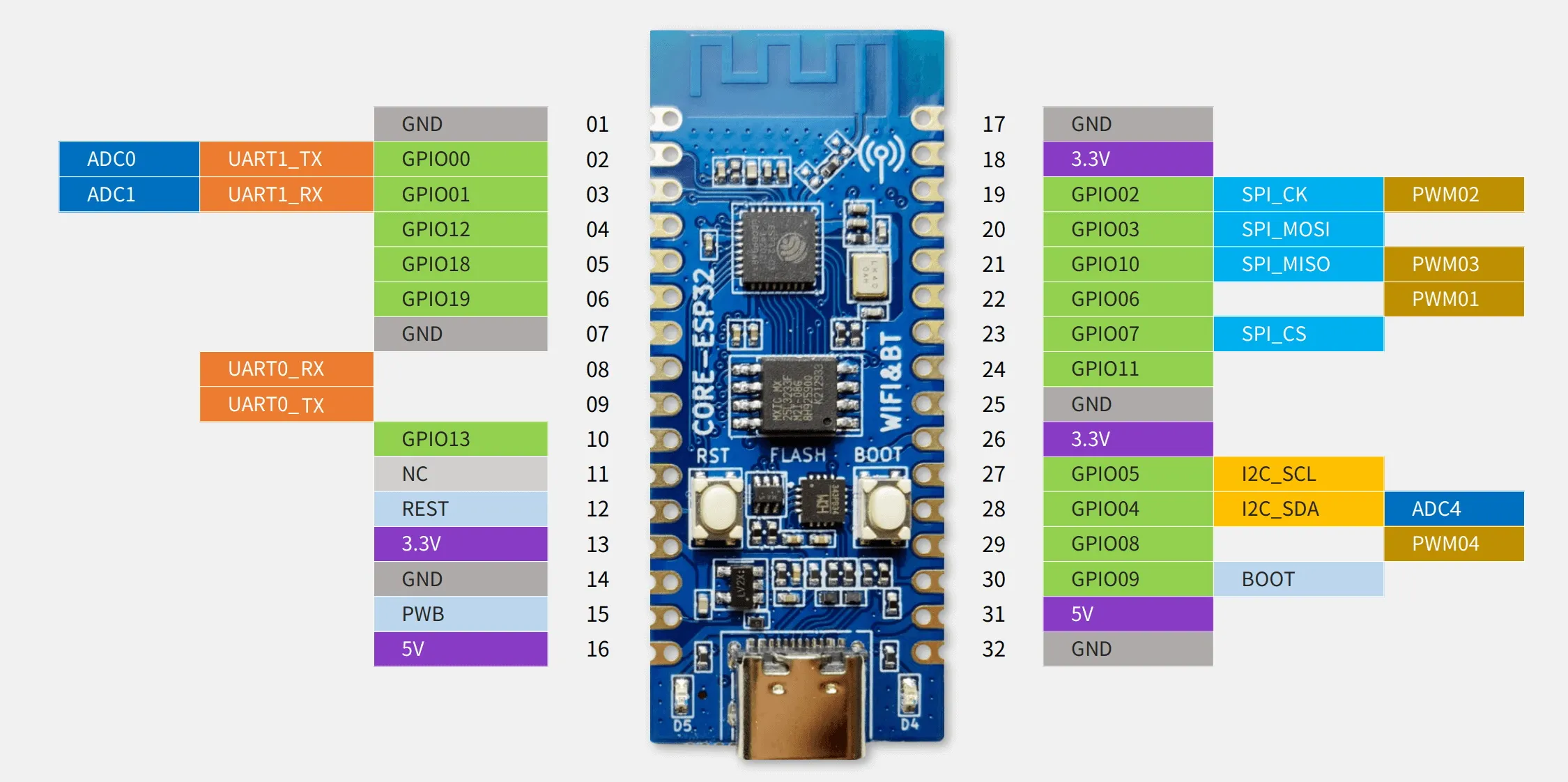LuatOS ESP32-C3 Development Board (CORE-ESP32)

Available from:
Aliexpress.com
Aliexpress.com
Amazon.de
Manufacturer:
Wiki.luatos.com
Install method:
USB to Serial
| GPIO # | Component |
|---|---|
| GPIO00 | User |
| GPIO01 | User |
| GPIO02 | User |
| GPIO03 | User |
| GPIO04 | User |
| GPIO05 | User |
| GPIO06 | User |
| GPIO07 | User |
| GPIO08 | User |
| GPIO09 | User |
| GPIO10 | User |
| GPIO12 | LedLink |
| GPIO13 | PWM 1 |
| GPIO18 | User |
| GPIO19 | User |
| GPIO20 | User |
| GPIO21 | User |
Configuration for ESP32-C3
{"NAME":"Luatos CORE-ESP32","GPIO":[1,1,1,1,1,1,1,1,1,1,1,0,544,416,0,0,0,0,1,1,1,1],"FLAG":0,"BASE":1}The classic model (the version with TTL serial port to USB) uses a CH343 driver to connect via USB. Download CH343 driver.

Flashing
Flash using Tasmota Web Installer and select Tasmota ESP32-C3 option.
For esptool.py download f.e. tasmota32c3.factory.bin and run esptool.py write_flash 0x0 tasmota32c3.factory.bin
To put ESP32-C3 in flash mode GPIO8 needs to be pulled high and GPIO9 pulled low.




